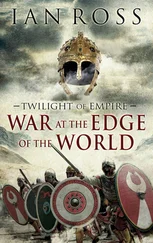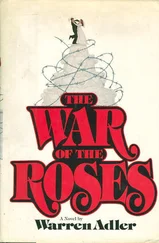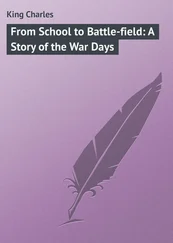The observers were detained on April 25 near Slovyansk, because they had not informed the “people’s authorities” that they entered the territory controlled by separatists. What is more, it was to their disadvantage that they were wearing civilian clothes, not uniforms. “These are NATO spies,” says Ponomarev. He repeats this accusation many times and is not bothered that one of the observers is an envoy from Sweden, not a member of the Alliance.
The observers are brought to the press conference in pairs, escorted by “volunteers” with rifles. The observers look well. They don’t exhibit any signs of beating, they are not filthy. They don’t even look tired. Ponomarev sits among the seven observers and an interpreter. He begins the conference. He doesn’t speak abusively, as he did earlier. There are no accusations of spying. He gives the floor to the observers. Initially, the chief of the OSCE mission, Colonel Axel Schneider, looks a little scared. Perhaps he thought that only Russian journalists would show up. It turns out, however, that the majority are representatives of European and American media.
“We are not prisoners of war, but only mayor Ponomarev’s guests,” says Schneider, and the “mayor’s” face brightens up with his characteristic mischievous smile. “We are treated in the best possible way, given the circumstances,” asserts the mission chief. Like other “guests,” the OSCE observers have no idea when they will be able to go home.
During the conference two Russian journalists, both women, showed off. Taking turns they asked the same questions, but in different forms. They wanted the observers to confess that they were spies. They were disappointed that they didn’t gather any sensational information.
As in the case of the SSU officers, Ponomarev announced that he would trade the observers for separatists arrested by the Ukrainian side. Nevertheless, he was not going to discuss this with the “Kiev junta.” The observers were to be rescued by diplomats from their own countries. Unfortunately, the process stalled and they were released only after eight days, when Putin’s envoy, Vladimir Lukin, arrived in Slovyansk.
Catch a Spy!
The separatist authorities live in constant fear of spies and saboteurs. To confirm that their fears are justified, every now and then they catch some “saboteurs,” and it’s even better if they belong to Right Sector.
On April 20 the journalists were informed that there had been shooting at one of the separatists’ checkpoints near Bilbasivka village, less than twenty kilometers west of Slovyansk. Three local men were killed. When I arrived at the spot with other journalists, I saw two cars burned to the ground. What caught my attention were the license plates, which miraculously were not even touched by the fire and that looked brand new. The number of different kinds of shells indicated that serious shooting had taken place, but the bullet traces were hard to find. The whole situation seemed extremely fishy.
However, during the morning press conference the “people’s authorities” decided not to keep the journalists in suspense. They brought all the spoils that supposedly had been found in a bag near the cars when one of the nationalists fled the scene of the shooting. Three printouts from Google Maps showing the neighborhood, a train ticket, a driver’s license, a car registration, three bullets, and the red-and-black visiting card of Dmytro Yarosh, the Right Sector leader, are displayed on the table. The phone number on the card, as a matter of fact, does not work, all the journalists know that the organization uses a different e-mail address, and the other side of the card is in English. A photo of the visiting card immediately appears on the internet and in the coming days will become one of the most popular memes. “Look, here is their medallion. I couldn’t make it myself,” says Ponomarev, after having realized that the visiting card was an embarrassment. The metal medallion with the inscription “Right Sector” hangs on a blue-and-yellow ribbon. “You have no reason to distrust me. I am always honest with you,” he addresses the skeptical journalists.
All these items, in fact, can fit into a shoulder bag, supposedly lost by one of the fleeing nationalists. But what about the MG3 machine gun in perfect condition that is also sitting on the table? With a tripod, it weighs at least twenty-seven kilograms. How can you flee with this? This question remains unanswered.
This event took place on Easter Sunday, the same day Kiev was promising not to take any military action. Nevertheless, the self-proclaimed authorities and the Russian media presented the incident as breaking the promise. On top of everything, all three shooting victims were Slovyansk residents. The youngest was to celebrate his twenty-fifth birthday in two months, the oldest was fifty-seven. Pictures of the victims appeared the same day. They were placed on the City Council building and on the Lenin monument. Each picture was signed: “People’s hero.” Red roses were laid. Several people are standing near the monument in a group. A few women are crying.
“We feed Ukraine, we work hard, and they murder us. How can it be?” says one of them.
Funeral celebrations took place two days later. People were gathering on the main square in front of the Orthodox church, altogether perhaps two or three hundred people. More had been expected.
Three buses pull over in front of the church with a coffin in each of them and a picture on each windshield. When the coffins were taken out, the crowd stood there in silence. Finally, a woman shouted: “Glory!”
“Glory, glory, glory!” responded the crowd. There are more and more slogans directed against nationalism. Then it’s time to focus on the media.
“On this occasion, we would like to ask the media to present the truth,” an elderly man is shouting through a megaphone.
“Truth, truth, truth,” the crowd is responding. Some discussions begin and the conclusion is that foreign media are not needed. Of course, with the exception of the Russian media that are doing a great job, according to the separatists’ sympathizers. It is only the Ukrainian media that are even worse than the foreign ones.
“Look, what they are saying there. These are pure lies,” a man standing in front of the church tries to convince me.
Dual Power
Stella Khorosheva, Ponomarev’s press secretary, is usually the first representative of the “people’s authorities” that journalists meet. She is forty-eight. When I see her for the first time she is wearing a grey jacket, a white blouse, and jeans. She has grey hair and glasses. Her phone is ringing all the time and she never silences it. She writes poetry and lives in Italy. She supports Forza Italia and Silvio Berlusconi. She came to Slovyansk only when the Russian Spring had already taken Crimea. She still has a lot of connections in Italy, so she tries to stir up public opinion there. She sometimes boasts about her articles on Facebook. At each press conference she moves around the room, darting and talking. She seems very chaotic. You realize very quickly that you shouldn’t ask this person any questions because she is always the last to know anything.
After the morning press conference with Ponomarev, together with other journalists who have just met the “mayor” I go to the barricade near the SSU building. “Greens” want to show off another Ukrainian nationalist who was captured. He supposedly has a list of colleagues’ phone numbers.
“Call and talk to them,” one of the “greens” encourages him. When the nationalist (from Right Sector, of course) stammers, a man in uniform prompts him about what to say. Another whispers to the Russian journalist and asks her to make the nationalist’s statement more precise.
Читать дальше








![Theresa Cheung - The Dream Dictionary from A to Z [Revised edition] - The Ultimate A–Z to Interpret the Secrets of Your Dreams](/books/692092/theresa-cheung-the-dream-dictionary-from-a-to-z-r-thumb.webp)



